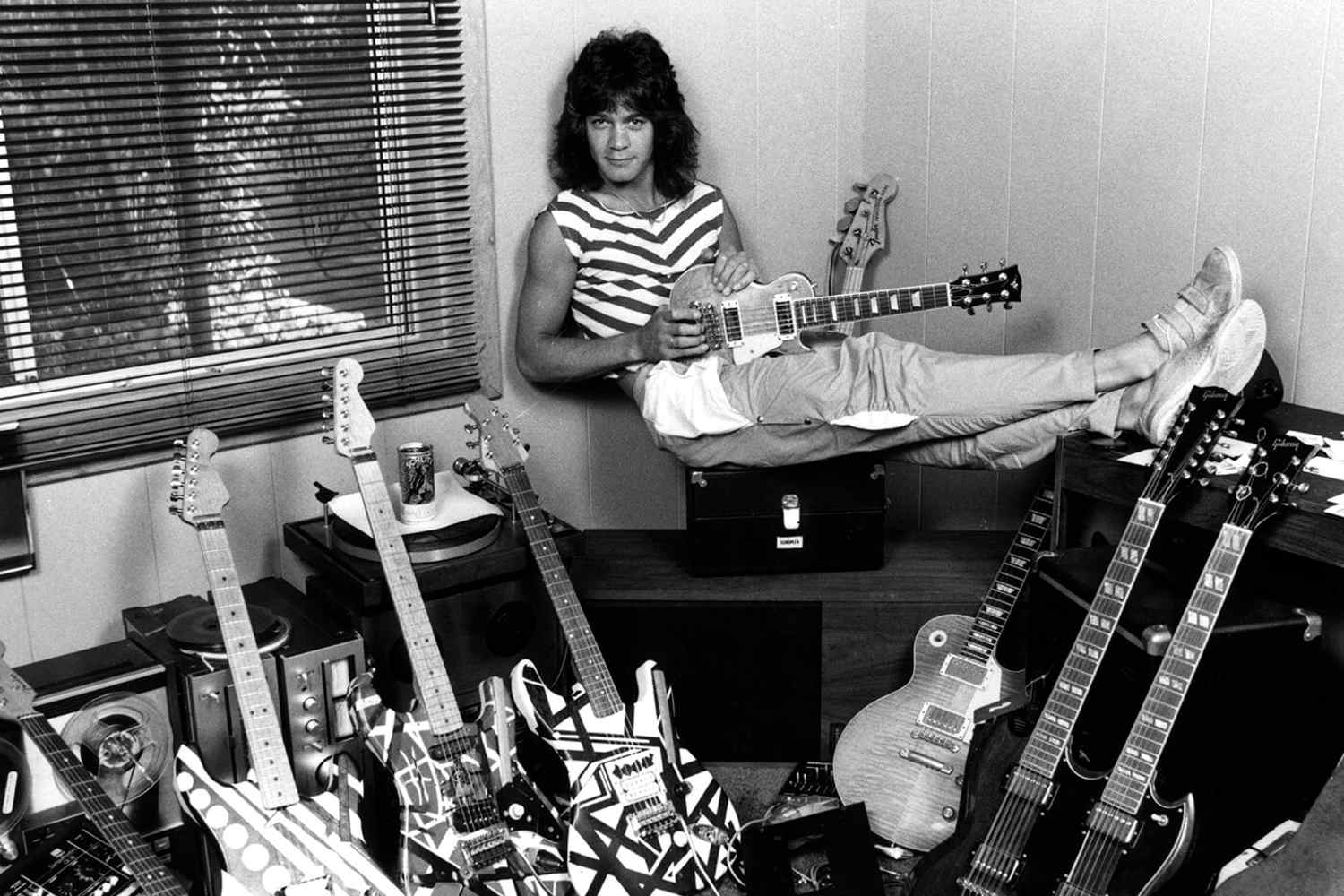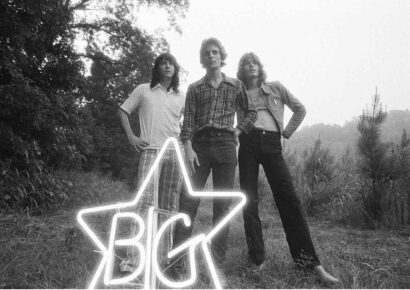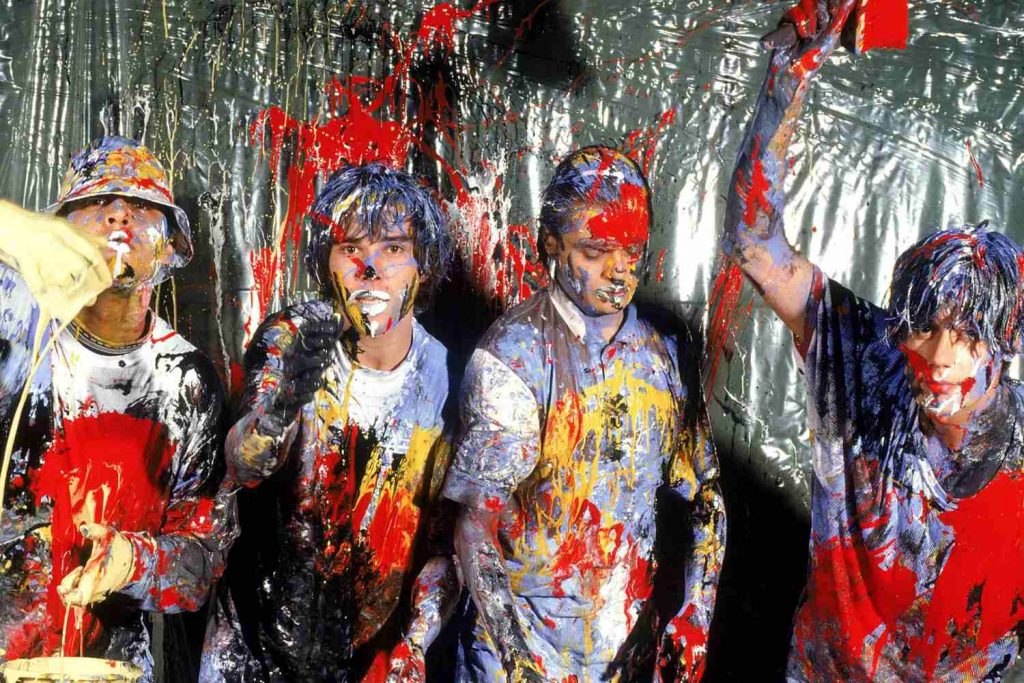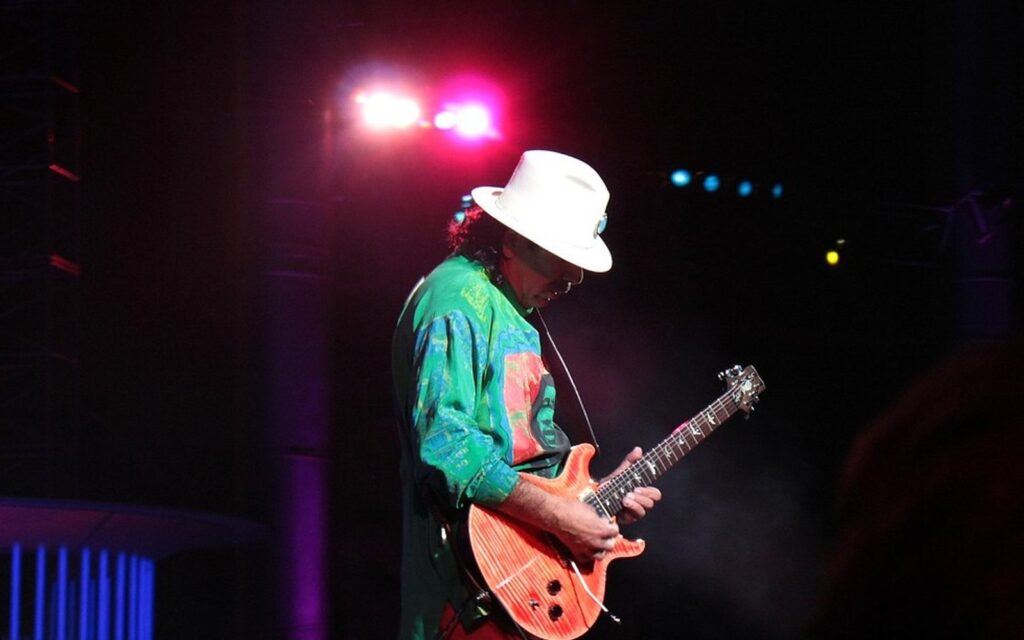Eddie Van Halen is one of the most famous guitarists of all time, and for good reason.
While other players focused on pushing boundaries within genres, EVH guitars’ mission was to innovate entirely. He’s credited with inventing tapping, spending some time hiding the technique, as well as famous licks and riffs like “Jump”, “Eruption” and “Hot For Teacher” being a milestone for the skills of guitar players everywhere.
EVH’s guitars were just one of the ways he created entirely new sounds on the electric guitar. His company, EVH Guitars, continues the legacy today, building on the unique designs and modifications he did to his own electrics.
Read up on all the latest features and columns here.
Makita 6012HD Power Drill
His pioneering mindset led Eddie to use some really interesting tools to shift and shape the tones he concocted, and the riffs he played. In particular, a drill was used for the uniquely robotic and fast trem-style picking at the start of “Poundcake”. Eddie’s choice of drill here was a Makita 6012HD Power Drill.
5150 amplifiers
Eddie’s history is possibly most synonymous with the 5150 range of amplifiers. Originally, with the 5150 “block letter” and 5150 II from Peavey in the 90s and 2000s, and now, with the 5150 III from EVH. The original 5150 and 5150II were re-issued after Eddie and Peavey parted ways in the 6505, 6505+ and 6534 (that featured an EL34 powered power stage).
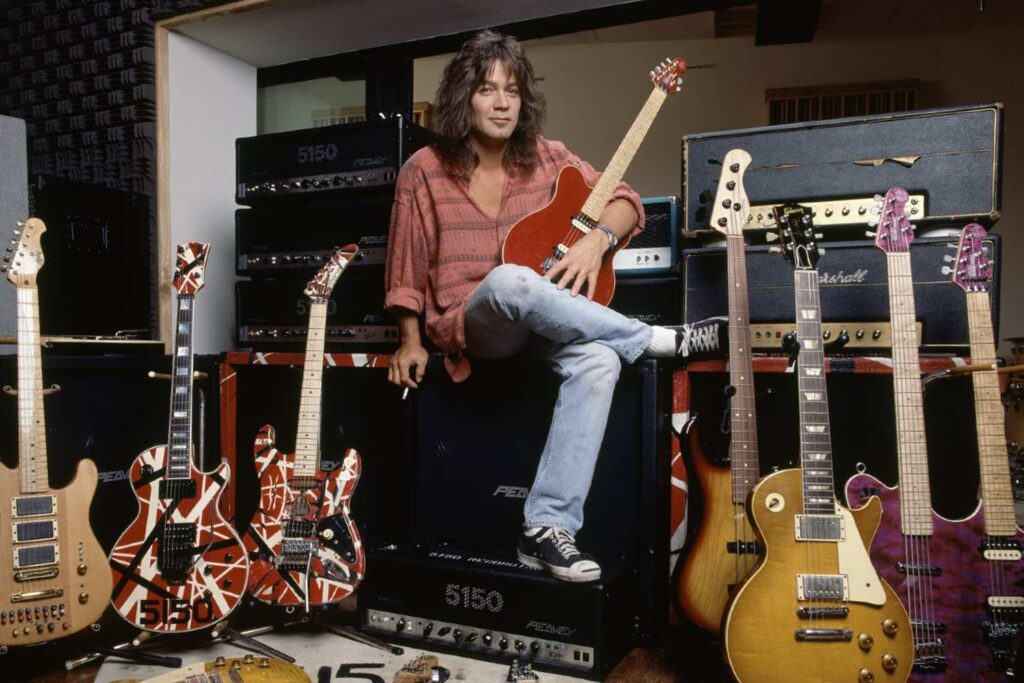
Closely associated with a lot of rock and metal, the original 5150 had four preamplifier stages and one phase inverter for progressively adding gain, as well as being rated for 120W. Progressive incarnations, the 5150 II and 5150 III, built on the original by adding better cleans and more controls, such as Bright and Crunch, to the clean and gain channels. The 5150 was pushed to the forefront in the 2000s with its use on albums like Machine Head’s Burn My Eyes, and producers such as Colin Richardson (Murderdolls, Napalm Death, DevilDriver, Gorguts) Andy Sneap (Testament, Judas Priest, Kreator, Carcass) and Jason Suecof (Job For A Cowboy, The Black Dahlia Murder, Trivium) hailed it for it’s tight, controlled gain.
Frankenstrat
The Frankenstrat is where Eddie took his tonal explorations into his own hands. The Frankenstrat, or “Frankie”, was an amalgamation of Gibson and Fender, Eddie wanting the lightweight, modern and sleek feel of a Super-strat, with the tonal explosion of a Gibson with a humbucker. The Frankenstrat was comprised of a neck and body bought separately, a Gibson PAF humbucker (pulled from Eddie’s ES-335) in the bridge and a Floyd Rose bridge. Finished in what would become a design closely associated with Eddie, the guitar has a criss-cross of black and white stripes under a red design.
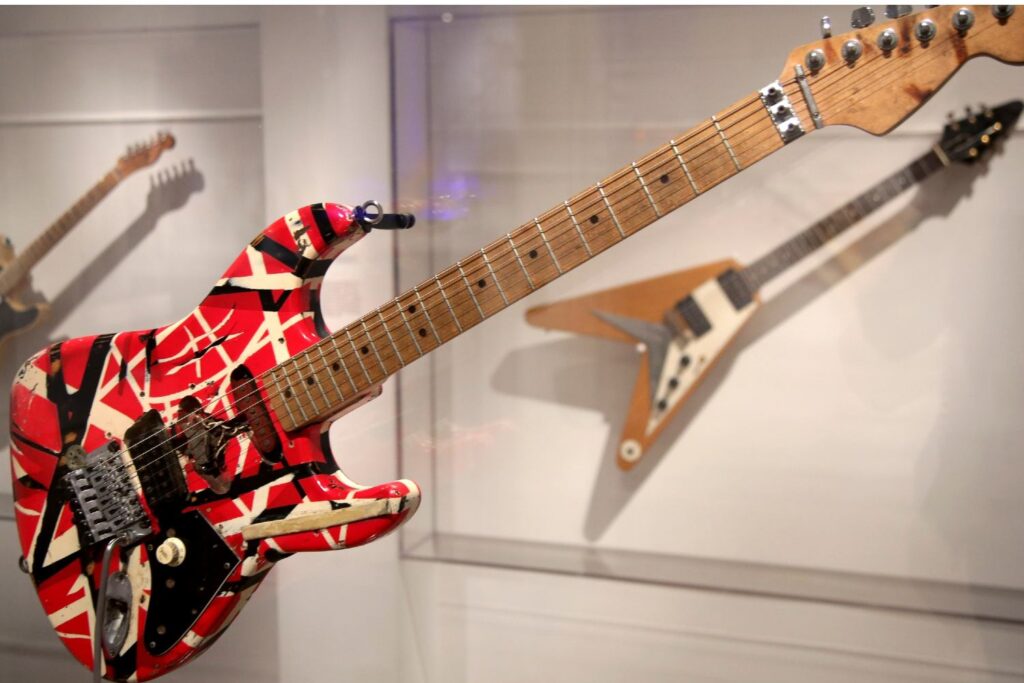
The guitar was wired for minimum tonal options, with the Volume control famously being capped with a knob labelled ‘Tone’. Eddie completed the guitar with a ‘Gibson’ decal on the headstock, a commentary on the amalgamation of two of the biggest guitar manufacturers.
Customised 1970’s Ibanez Destroyer 2459 “The Shark”
Not content with his own creations, Eddie also played “The Shark”, a heavily modified Ibanez Destroyer. The natural Destroyer was used early in Eddie’s career, before being painted white and eventually featuring a unique take on his red, white and black colour way.
It’s said this heavy modification was regretted because the amount of wood removed for the unique body shape affected the guitar’s tone.
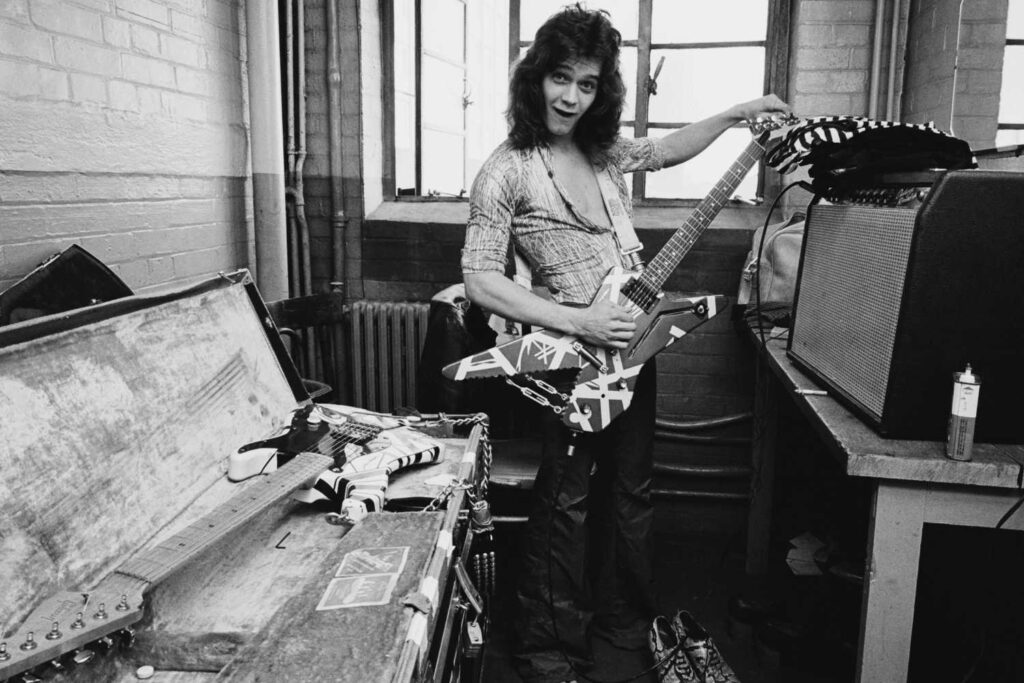
“The Shark” itself was a 1970 Ibanez Destroyer, their take on an Explorer style body shape, with an extra cavity removed from the belly of the guitar, as well as the edge of the body beneath the controls being shaved down. The extra cavity was filled with some (purely aesthetic) chains, and the pick guard was removed, exposing the wiring cavity. “The Shark” also featured a brass nut.
Wolfgang guitars
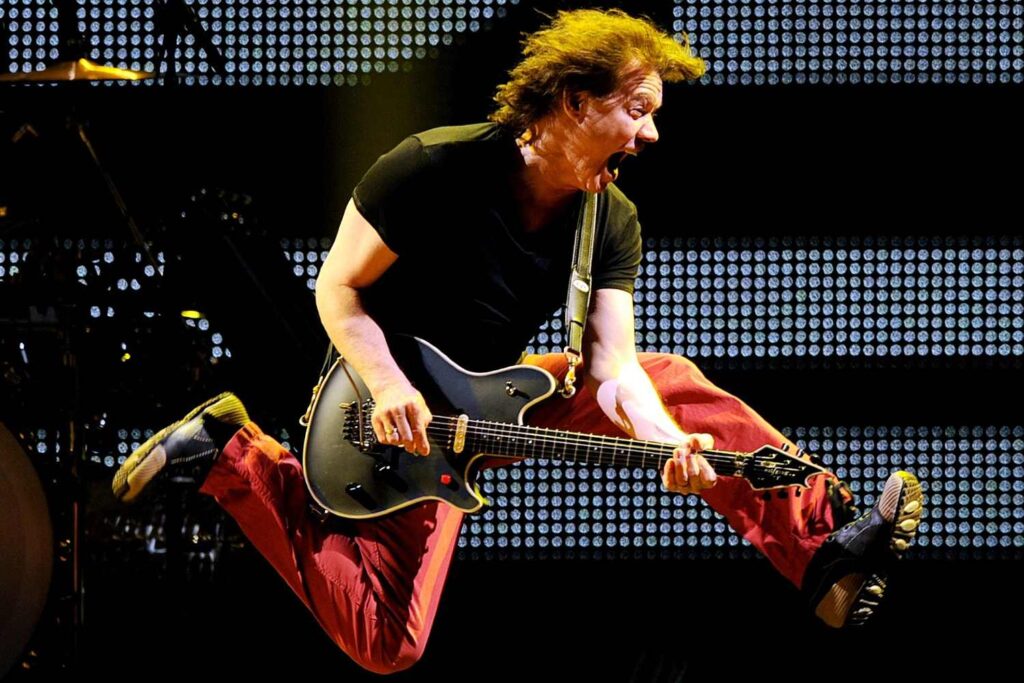
Further along in his career, the Wolfgang body shape was born. While the Wolfgang is now being produced by EVH, the body shape has been produced by Ernie Ball Music Man (now the Axis) and Peavey, Eddie’s own modifications and customisations coming to fruition with the Wolfgang.
The Wolfgang is generally a double humbucker electric, traditionally with a Floyd Rose to Eddie’s specs but hardtail versions are now available. Seemingly a body shape that, again, blends Fender and Gibson, the Wolfgang is available in both neck-thru and bolt-on designs depending on your preference.
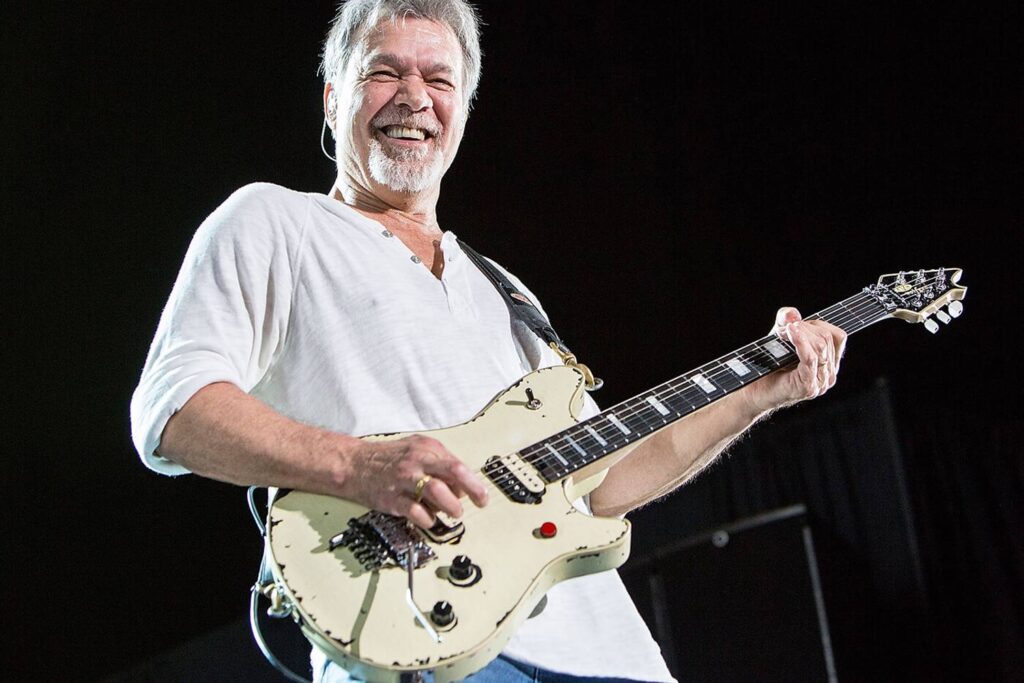
The original Wolfgang from Peavey (which was building on the Ernie Ball Music Man EVH model) featured a carved top, though flat tops were available in the eventual Wolfgang Special, a “budget” version of the original.
Ohmite Variac
Another unique piece was Eddie’s use of a variac, to vary the voltage going to the amplifier, and sculpt increasingly unique tones. The power supply can either starve or drive a tube amplifier, and adjustments can have a massive effect on the amplifier’s sound.
Eddie’s was an Ohmite variac specifically, and was purchased after Eddie bought a Marshall intended for use in the UK, not the 110V standard of the states. He ended up with a variac, as well as a 110V Marshall head instead, and began experimenting with adjusting the amplifier’s voltage below the intended 110V – to great success.
Starving an amplifier of voltage produces a uniquely compressed, fuzzy sound, and is credited with being an integral part of Van Halen’s “brown sound”.
Teisco Del Ray
Eddie’s first guitar was a Teisco Del Ray, bought from Seers after Eddie’s brother, Alex, got better at the drums than him and Eddie, fatefully decided to swap to guitar. The Del Ray had four pickups, the complex routing having a lasting impact on Van Halen as he seemed to like having lots of tonal options available to him, always the innovator.
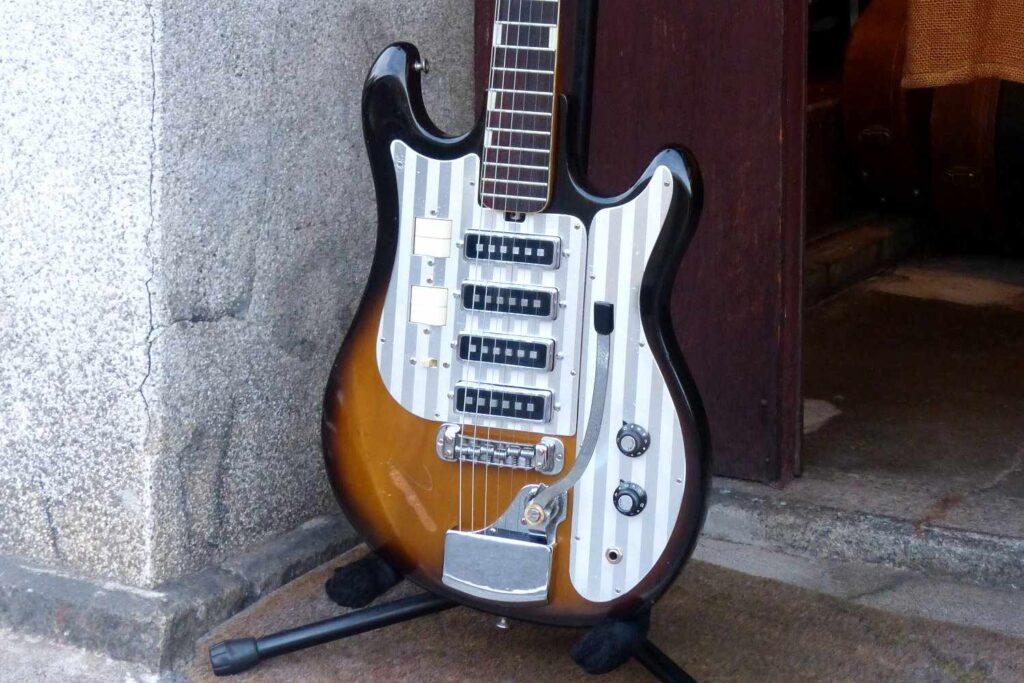
Check out the full range of EVH Guitars here.
